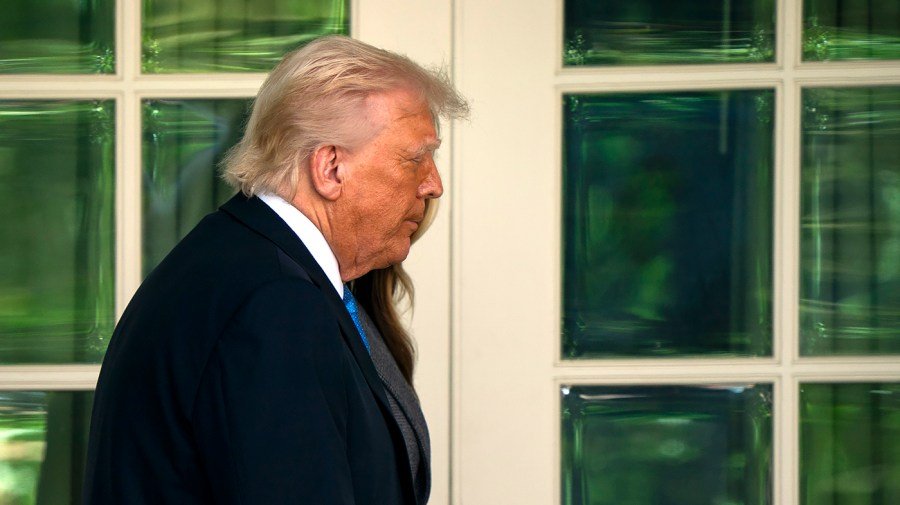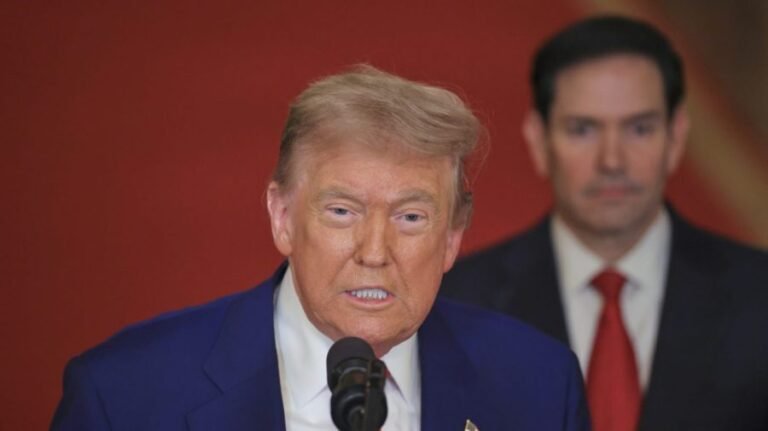
President Trump’s approval rating has trended upward one month after poll aggregates at his 100-day mark painted a grim picture for his presidency’s second term.
Trump’s approval rating in the Decision Desk HQ/The Hill polling average rose as high as 47.1 percent this past weekend, the highest point it had been in the past two months before coming down slightly to 46.7 percent as of Wednesday. But that’s still 3 points higher than the low point he reached for his second term earlier this month.
The changes are good news for Trump, who saw consistent declines in his approval ratings until recently amid anxiety over his sweeping trade policies.
“We can argue about whether it’s gone up, but it certainly hasn’t gone down,” said Scott Tranter, the director of data science for Decision Desk HQ.
At the signature 100-day mark that is commonly a point of reflection for presidencies, Trump’s numbers weren’t ideal.
He enjoyed above-water approval ratings for roughly the first month and a half of his return to office, something he didn’t experience during his first term, but he consistently declined for the next couple of months.
His disapproval rating reached a high point in the DDHQ polling average at 53.4 percent in late April, just a few days before the end of his first 100 days. His approval rating’s low point came about 10 days later.
But Trump has seen a modest but steady rise since then.
Tranter expressed some caution about how much to make from the increase, as a 2- to 3-point increase would be just on the “edge” of the margin of error. But he said the biggest takeaway of the past few weeks is that it hasn’t dropped, which may not have been expected a month ago.
At the same time as Trump’s approval rating has ticked up, his favorability rating and the percentage of the public who say the country is on the right track have also both improved.
One of the main reasons as to why the numbers have gone in this direction may be Trump’s suspension of his tariff plans, which caused significant uncertainty in the market and among the public, as well as the fact that the forecasted harm on the economy hasn’t been seen yet, Tranter said.
“A lot of people thought that as these tariffs developed, even though they were reversed back and the whiplash back and forth, that stuff became more expensive, or as the perceived craziness came out, his approval rating would suffer,” he said. “And so it hasn’t suffered.”
The most recent inflation report from the Commerce Department released Friday showed prices cooled off more in April even as economists have been waiting for the effects of the tariffs to play out.
“Each month we keep trying to assess whether tariffs are going to drive inflation higher, but the pauses keep pushing the prospect of higher prices further out,” said Scott Helfstein, the head of investment strategy at financial company Global X, in a commentary.
Polling has regularly shown that views of Trump’s trade policies have been among the biggest drags on his approval rating. But he on several occasions has announced wide-ranging tariffs before pulling them back or delaying them while negotiations take place on a trade deal.
Most recently, Trump pushed back his deadline for a deal with the European Union for it to avoid a 50 percent tariff on exports to the U.S.
Republicans said Trump has an opportunity to improve his standing more if he can secure these deals to level the “playing field” as he has argued is his goal.
“We had a little bit of uncertainty, but I always stuck by the fact that he knows how to negotiate a good deal, and many countries are going to come to the table and start negotiating, because it’s their future on the line too,” said Republican strategist Mehek Cooke.
Cooke argued the increases in Trump’s approval rating come as a result of the public seeing the benefits of his policies coming to fruition. She also said the increase is a result of backlash against “judicial activists” who are trying to stop his agenda.
As Trump has signed executive orders on a wide range of issues, including on restructuring the federal workforce and on illegal immigration and asylum-seekers, the courts have on various occasions blocked them. That includes two federal courts that blocked many of Trump’s tariffs, though an appeals court lifted one of those rulings.
“There’s also a massive change in our mentality because we’re seeing woke judicial activists, the same way they attacked him when he tried to run for president, now tried to stop his agenda, and I guarantee you, that’s why there’s been a surge in [polling],” Cooke said.
Republican strategist Matthew Bartlett, who worked in the State Department during the first Trump administration, said Trump remains a “polarizing figure in polarizing times,” but he’s not surprised to see an uptick, given the tariff pause, a drop in gas prices and an increase in the stock market.
Bartlett said the politics on tariffs are “weird” as they historically haven’t been a Republican policy stance. He said Trump’s populist stances have some cross-party appeal, putting Democrats in a tough position to respond.
Some of the leading Democrats have taken differing positions on how hard to come out against the tariffs, particularly as labor unions, a key part of the Democratic coalition, support them to some extent.
Bartlett also attributed Democratic struggles to repair the public’s view of their party as tied into Trump’s standing.
“Historically, the norms would have the opposition party ready to swing back and forth, and we’re not seeing that quite yet,” he said.
But Tranter and Bartlett said Trump may settle roughly into this range of having an approval rating between 43 percent and 47 percent given the intense polarization of the country, as has been common in the past couple administrations.
“It’s a very unfortunate byproduct of our two-party system right now and the polarization of our times and people,” Bartlett said. “So I would suspect that that is going to be the case for the foreseeable future.”
Tranter said if that range is ultimately what Trump settles into, it’ll be higher than the typical range he saw during his first term, when he often had an approval rating in the high 30s.
“That is statistically significant, a standard deviation higher,” he said. “Now, could drop, but if this is where it settles, he’s got a higher low than he did in his first term, which makes sense, because he won the popular vote this time around.”


